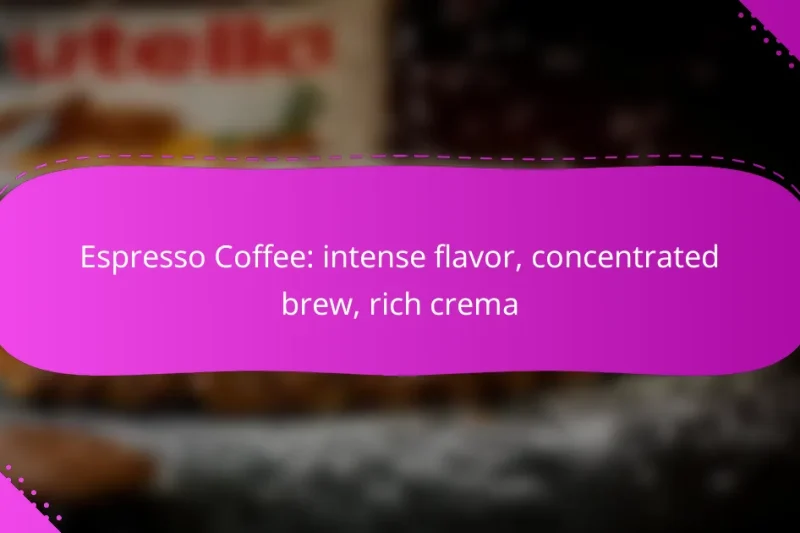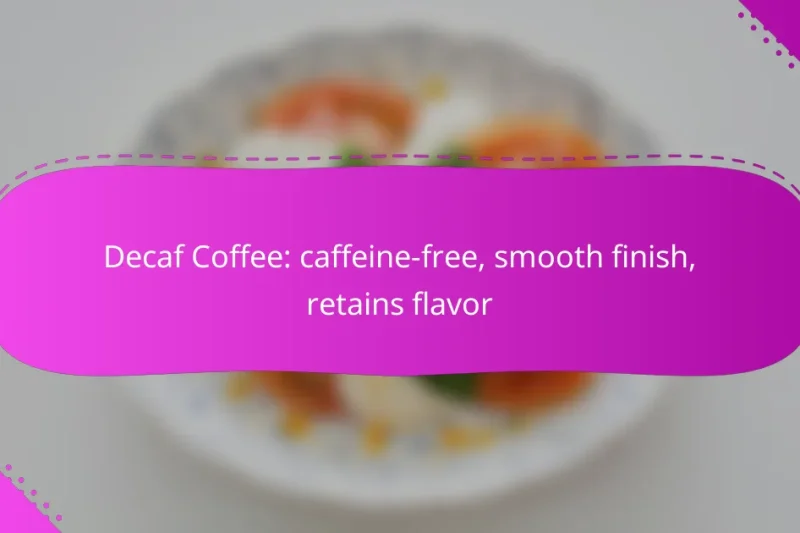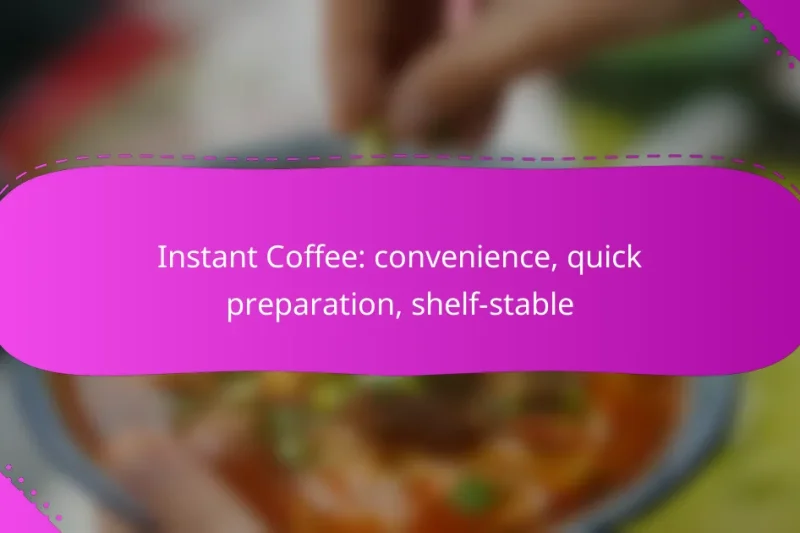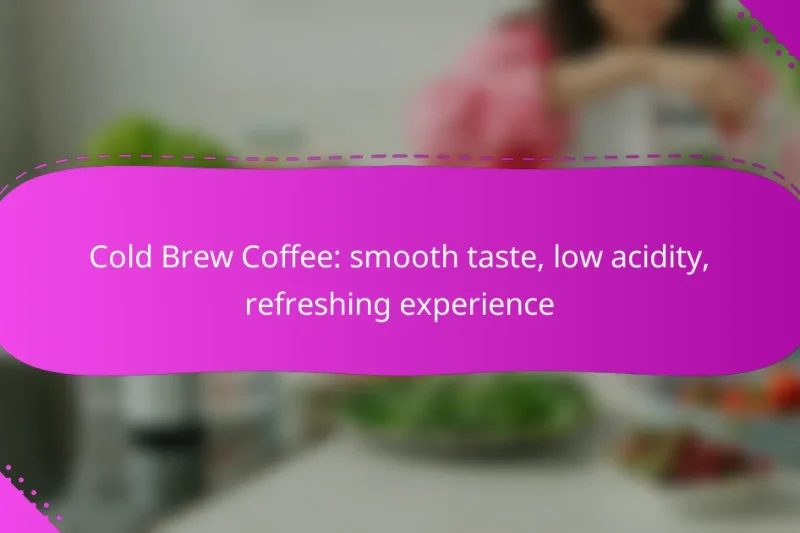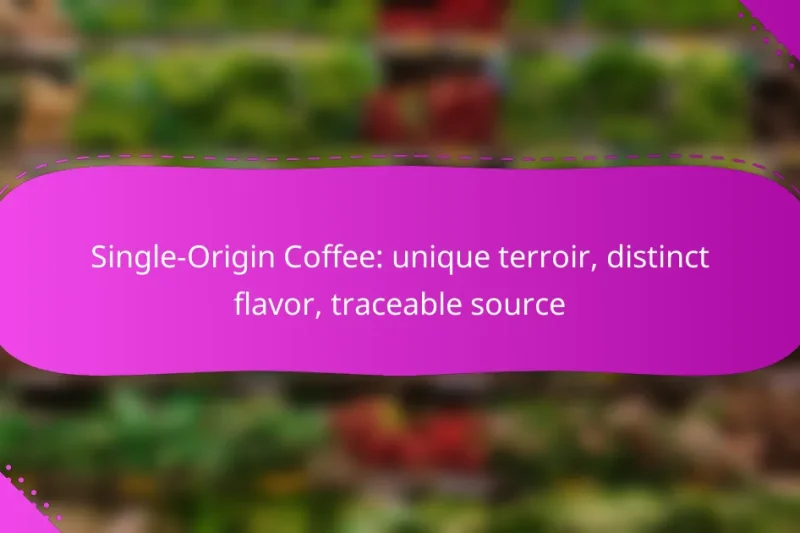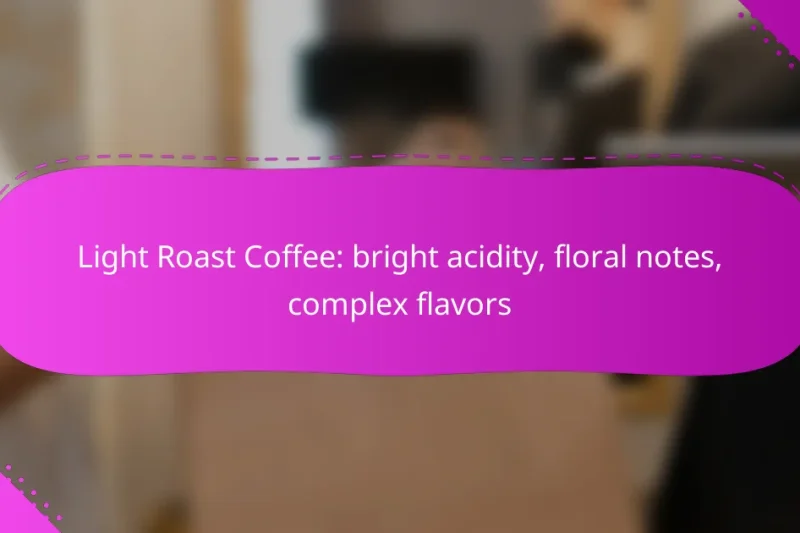Espresso coffee is celebrated for its intense flavor and concentrated brew, delivering a rich and satisfying … Espresso Coffee: intense flavor, concentrated brew, rich cremaRead more
Reasons to Choose Different Coffee Types
Choosing the right type of coffee can greatly enhance your drinking experience, as each variety offers unique flavors and brewing methods. From the concentrated richness of espresso to the smoothness of cold brew and the robust profile of French press, understanding these differences can help you find your perfect cup. Explore the diverse world of coffee to discover which type suits your taste and lifestyle best.
Decaf Coffee: caffeine-free, smooth finish, retains flavor
Decaf coffee offers a delightful alternative for those seeking to enjoy rich coffee flavors without the … Decaf Coffee: caffeine-free, smooth finish, retains flavorRead more
Blended Coffee: balanced taste, consistent quality, versatile use
Blended coffee is celebrated for its balanced taste and consistent quality, achieved by combining beans from … Blended Coffee: balanced taste, consistent quality, versatile useRead more
Nitro Coffee: creamy texture, cold served, unique presentation
Nitro coffee is a delightful beverage that combines cold brew coffee with nitrogen gas, resulting in … Nitro Coffee: creamy texture, cold served, unique presentationRead more
Specialty Coffee: high quality, unique processing, expert sourcing
Specialty coffee represents the pinnacle of quality, characterized by meticulously sourced beans and innovative processing techniques … Specialty Coffee: high quality, unique processing, expert sourcingRead more
Instant Coffee: convenience, quick preparation, shelf-stable
Instant coffee is a convenient solution for coffee lovers, offering quick preparation and a long shelf … Instant Coffee: convenience, quick preparation, shelf-stableRead more
Cold Brew Coffee: smooth taste, low acidity, refreshing experience
Cold brew coffee is a delightful beverage known for its smooth taste and low acidity, making … Cold Brew Coffee: smooth taste, low acidity, refreshing experienceRead more
Single-Origin Coffee: unique terroir, distinct flavor, traceable source
Single-origin coffee is celebrated for its unique flavors and traceable sources, reflecting the specific terroir where … Single-Origin Coffee: unique terroir, distinct flavor, traceable sourceRead more
Fair Trade Coffee: ethical sourcing, community support, premium quality
Fair Trade Coffee is committed to ethical sourcing, ensuring that coffee farmers receive fair compensation that … Fair Trade Coffee: ethical sourcing, community support, premium qualityRead more
Light Roast Coffee: bright acidity, floral notes, complex flavors
Light roast coffee is celebrated for its bright acidity, floral notes, and complex flavors, offering a … Light Roast Coffee: bright acidity, floral notes, complex flavorsRead more
Why choose espresso over other coffee types?
Espresso stands out among coffee types due to its concentrated flavor and quick preparation, making it a favorite for many coffee enthusiasts. Its unique brewing method extracts rich flavors and aromas, providing a robust coffee experience in a small serving.
Rich flavor profile
Espresso is known for its intense and complex flavor profile, which can include notes of chocolate, caramel, and various fruits. The brewing process involves forcing hot water through finely-ground coffee, resulting in a concentrated shot that highlights the coffee’s natural characteristics. This depth of flavor is often preferred by those who appreciate a more pronounced coffee taste.
Many espresso varieties are crafted from high-quality beans, often sourced from specific regions known for their unique flavor notes. This can lead to a diverse tasting experience, with each espresso shot offering something different based on its origin and roast level.
Quick preparation time
One of the main advantages of espresso is its quick preparation time, typically taking less than 30 seconds to brew. This efficiency makes it ideal for busy mornings or when you need a quick caffeine boost. With the right equipment, such as an espresso machine, you can easily prepare multiple shots in a short period.
For those who enjoy making coffee at home, investing in a quality espresso machine can streamline your coffee routine. Consider options that allow for quick heating and easy cleanup to maximize your brewing efficiency.
Versatile base for drinks
Espresso serves as a versatile base for a variety of coffee drinks, including lattes, cappuccinos, and Americanos. Its concentrated nature allows it to blend well with milk and flavored syrups, creating a wide range of beverages to suit different tastes. This adaptability makes espresso a popular choice in coffee shops and at home.
When experimenting with espresso-based drinks, consider the balance of flavors. For example, pairing espresso with steamed milk can create a creamy texture, while adding flavored syrups can enhance sweetness. Understanding these combinations can help you craft the perfect drink for any occasion.
What are the benefits of choosing cold brew coffee?
Cold brew coffee offers a smooth flavor profile and a refreshing alternative to traditional hot coffee. It is less acidic, making it easier on the stomach, and can be prepared in large quantities for convenience.
Smooth, less acidic taste
One of the main advantages of cold brew coffee is its smooth and mellow flavor. The brewing process, which involves steeping coarsely ground coffee in cold water for an extended period, extracts fewer bitter compounds compared to hot brewing methods.
This results in a coffee that is less acidic, making it a suitable choice for those who experience stomach discomfort with regular coffee. Many drinkers appreciate the naturally sweet notes that emerge from cold brew, enhancing the overall drinking experience.
Higher caffeine content
Cold brew coffee typically contains a higher caffeine concentration than standard brewed coffee. This is largely due to the longer steeping time and the coffee-to-water ratio used during preparation.
While the exact caffeine content can vary based on the specific beans and brewing method, cold brew often has about 100-200 mg of caffeine per 8-ounce serving, compared to 95 mg in a similar serving of hot brewed coffee. This makes it a popular choice for those seeking an extra energy boost.
Easy to make in batches
Preparing cold brew coffee is straightforward and allows for batch brewing, which is ideal for busy lifestyles. You can make a large quantity at once, typically using a ratio of 1 cup of coarsely ground coffee to 4 cups of cold water.
After steeping for 12-24 hours, simply strain the mixture, and you have a ready supply of coffee that can be stored in the refrigerator for up to two weeks. This convenience makes it easy to enjoy cold brew on demand without the need for daily preparation.
How does French press coffee compare to drip coffee?
French press coffee offers a richer, more robust flavor compared to drip coffee, which tends to be milder and cleaner. The brewing method and extraction process significantly influence the taste and texture of the final cup.
Full-bodied flavor
The French press method allows coffee grounds to steep directly in hot water, resulting in a fuller-bodied flavor profile. This immersion brewing extracts more oils and fine particles, contributing to a richer taste compared to drip coffee, which uses a filter that captures many of these elements.
Many coffee enthusiasts prefer the French press for its ability to highlight the unique characteristics of different coffee beans. The result is often a more complex flavor experience that can vary widely depending on the type of coffee used.
Less equipment required
Brewing coffee with a French press requires minimal equipment, typically just the press itself and hot water. In contrast, drip coffee makers can be more complex, often needing filters and a power source.
This simplicity makes the French press an attractive option for those who appreciate a straightforward brewing process, whether at home or while traveling. It’s easy to clean and doesn’t rely on electricity, making it versatile for various settings.
Longer brewing time
French press coffee generally requires a longer brewing time, typically around four minutes, compared to drip coffee, which can brew in a few minutes. This extended steeping allows for greater extraction of flavors but may not be ideal for those in a hurry.
When using a French press, timing is crucial; over-brewing can lead to bitterness. A good practice is to set a timer to ensure optimal flavor extraction without compromising the taste.
What factors should you consider when selecting coffee beans?
When selecting coffee beans, consider factors such as origin, roast level, and freshness. Each of these elements significantly influences the flavor and overall experience of your coffee.
Origin and flavor notes
The origin of coffee beans plays a crucial role in determining their flavor profile. Beans from different regions, such as Ethiopia, Colombia, or Brazil, exhibit distinct taste characteristics influenced by local climate and soil conditions.
For example, Ethiopian coffees often have fruity and floral notes, while Colombian varieties may be more balanced with nutty undertones. Understanding these flavor notes can help you choose a coffee that aligns with your personal taste preferences.
Roast level
Roast level affects the intensity and flavor of coffee. Light roasts typically retain more of the bean’s original flavors, while dark roasts develop deeper, bolder tastes due to the roasting process.
When selecting a roast, consider your flavor preferences. If you enjoy bright acidity and nuanced flavors, opt for a light roast. For a richer, more robust cup, a medium or dark roast may be more suitable.
Freshness and grind size
Freshness is vital for optimal flavor. Coffee beans are best consumed within a few weeks of roasting, as they lose flavor over time. Look for roast dates on packaging to ensure you are buying fresh beans.
Grind size also impacts the brewing process and flavor extraction. For example, a coarser grind is ideal for French press, while a finer grind is necessary for espresso. Matching the grind size to your brewing method can enhance the overall taste of your coffee.
How do coffee types affect caffeine content?
Coffee types significantly influence caffeine content, with variations depending on brewing methods and bean types. Generally, espresso contains more caffeine per ounce than drip coffee, while cold brew tends to have higher caffeine levels than regular brewed coffee due to its steeping process.
Espresso vs. drip coffee
Espresso is a concentrated coffee brewed by forcing hot water through finely-ground coffee, resulting in a small serving with high caffeine density. A typical shot of espresso (about 30 ml) contains approximately 63 mg of caffeine, while an 8 oz cup of drip coffee usually has around 95 mg, but is consumed in larger volumes.
When choosing between espresso and drip coffee, consider your desired caffeine intake and serving size. If you prefer a quick, intense caffeine boost, espresso is ideal. For a more prolonged experience, drip coffee may be better suited.
Cold brew vs. regular brew
Cold brew coffee is made by steeping coarsely ground coffee in cold water for an extended period, typically 12-24 hours. This method extracts caffeine differently, often resulting in a smoother, less acidic drink with higher caffeine levels, sometimes reaching around 200 mg per 8 oz serving.
Regular brewed coffee, made with hot water, extracts caffeine more quickly and can vary widely in strength depending on the brewing time and coffee-to-water ratio. If you enjoy a milder flavor and a caffeine kick, cold brew is a great choice, while regular brew offers a classic coffee experience.
What are the popular coffee types in New Zealand?
In New Zealand, popular coffee types include the flat white, long black, and short black. Each type has distinct characteristics and preparation methods that cater to different preferences.
Flat white
The flat white is a creamy coffee drink that originated in New Zealand and Australia. It consists of a shot of espresso topped with steamed milk, creating a velvety texture without the frothiness of a cappuccino.
When ordering a flat white, expect a smaller serving size than a latte, typically around 5 to 6 ounces. This concentrated flavor makes it a favorite among coffee enthusiasts who appreciate the balance between coffee and milk.
Long black
A long black is a simple yet robust coffee made by pouring hot water over a double shot of espresso. This method preserves the crema, providing a rich and aromatic experience.
Long blacks are typically served in a larger cup than a flat white, around 8 to 10 ounces. This coffee type is ideal for those who enjoy a strong coffee flavor without the addition of milk.
Short black
The short black, known as espresso in many places, is a concentrated coffee served in a small shot, usually about 1 to 2 ounces. It is made by forcing hot water through finely-ground coffee, resulting in a bold flavor.
This type of coffee is perfect for those who want a quick caffeine boost or appreciate the pure taste of coffee without any additives. It can also serve as the base for other coffee drinks like lattes and cappuccinos.
How can you pair coffee types with food?
Pairing coffee types with food enhances both the beverage and the dish, creating a more enjoyable experience. Consider the flavor profiles of the coffee and the food to find complementary or contrasting tastes.
Light Roasts
Light roasts typically have bright acidity and fruity notes, making them ideal for pairing with lighter dishes. Foods such as salads, seafood, or pastries with citrus flavors can enhance the coffee’s natural sweetness.
When choosing a light roast, look for options with floral or berry notes to match with desserts like cheesecake or fruit tarts. Avoid heavy, rich foods, as they can overpower the delicate flavors of the coffee.
Medium Roasts
Medium roasts strike a balance between acidity and body, making them versatile for various food pairings. They work well with roasted meats, pasta dishes, and even chocolate desserts.
For a satisfying combination, try pairing a medium roast with a hearty lasagna or a chocolate brownie. The coffee’s caramel and nutty undertones can complement the richness of these dishes.
Dark Roasts
Dark roasts feature bold flavors and low acidity, which can stand up to robust foods. They pair nicely with grilled meats, barbecued dishes, and rich desserts like dark chocolate cake.
When serving dark roast coffee, consider offering it alongside a charcuterie board or a slice of rich cheesecake. The strong flavors of the coffee can enhance the savory and sweet elements of these foods.
